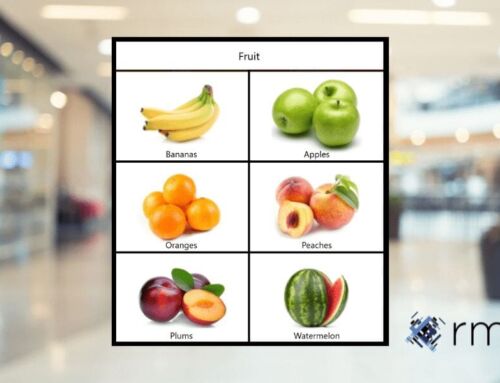Author
Tommy Chapman
Share
Getting online: things to consider when setting up your e-commerce site

Over the past 20 years, the continuing trend has been for online sales to grow steadily year on year. 2020 not only continued this trend but, for obvious reasons, accelerated it significantly. It was predicted that online sales would increase by 11% in 2020. Thanks to COVID-19, shoppers had to do much of their purchasing online, and it is now thought that online shopping increased by 19% during 2020. We can’t know what 2022 and beyond will bring, but we can be reasonably sure that eCommerce retail will continue to grow and grow even as the pandemic abates.
This trend means that it is becoming even more critical for retailers to have a robust and effective eCommerce website to cater to the increasing number of online customers. Easy to say, but what do you need to think about when selecting the right eCommerce platform for your business?
Get the customer on your website
One of the first things to consider is how to get people to your website in the first place. Your bricks and mortar shop is a physical presence that shoppers will notice. Even if they didn’t know you were there before, they could see you as they walk or drive past. The same is not true of your website. You will need to consider Search Engine Optimisation (SEO), advertising and other marketing communications to generate traffic to your site.
Help them find what they want
So, you’ve done your marketing activities, and customers are coming to your website to look at your products. Great! Except, of course, that they can’t feel your products. In bricks and mortar shops, they can pick them up, inspect them, and get a good idea of whether or not it’s what they’re looking for.
Instead, you need to provide clear, detailed photographs of your products, preferably from more than one angle. Many manufacturers will supply these for you, but if not, you should consider having a professional photographer take pictures of your stock.
Similarly, because the customer can’t inspect the product closely, you need to provide detailed titles and descriptions. Again, the manufacturer may supply these, but you will need to hire a copywriter to do this for you if they don’t. They should be familiar with eCommerce SEO to ensure that your products have the best chance of being found by online searches.
Your product pages should also include a clear call to action. Tell your customer what you want them to do to maximise the chances of a sale. “Click to purchase”, “Buy now”, or “Order below,” for example.
Another effective tactic to consider is displaying related or complementary items when a customer adds something to their basket. Are they ordering a desk? Display office chairs and desk equipment. If they’re ordering children’s clothes, display toys or children’s books.
One thing you will need to consider is how to categorise the products on your website. Do you want to organise them in precisely the same way they’re laid out in the aisles of your physical shop? This provides a more seamless experience and may make it easier for repeat customers to find what they’re looking for. On the other hand, it might be better to break your categories down more to stop customers from being overwhelmed by too many choices.
Make the sale
OK, the customer has found the item(s) they want. Now you need to encourage them to actually buy it. Think about how you can encourage sales and promote specific products or groups of products. Discount codes are a popular and effective method of doing this. You can provide these in email newsletters and include them as part of your customer loyalty scheme or rewards programme.
At this stage in the customer journey, a major issue facing eCommerce sites is ‘cart abandonment’. That is customers who select items to buy but then leave without completing the purchase. The average abandonment rate for e-commerce sites is almost 70% , so you will have to decide on the best way to handle this. The majority of cart abandonments are on mobile devices, so one way to address this may be to ensure that your site is optimised for mobiles users to get them through the purchasing process as quickly and easily as possible. You can also follow up with customers who have abandoned their cart and encourage them to complete the purchase.
Next, you need to consider how the customer will pay for the goods. There are plenty of options, including debit and credit cards. Still, you might also want to consider allowing online purchasing methods such as PayPal or credit services like Klarna to give your customer as many payment options as possible.
Deliver the goods
So, the customer has found the right item, navigated to the checkout and paid for their order. Fantastic! Now you need to consider how the goods will be delivered to them. Most companies will charge for postage and packaging, but it may be worth considering free delivery for orders over a certain value. You will also need to take the size and weight of products into account when deciding how much to charge for delivery. Lastly, you might also want to think about offering a click-and-collect service and let customers come and pick up the items they’ve ordered themselves. That way, customers can often receive their purchases sooner and avoid paying extra for postage.
It’s more important than ever for businesses to ensure that they have a robust online presence and give their customers as many different ways to buy from them as possible. This becomes far more effective when an organisation transforms itself into a true omnichannel retailer, integrating its online and offline systems and operations to deliver a seamless customer experience. RMS can help you integrate your online and offline business tools quickly and efficiently, putting your company in the best possible position to face the future and the challenges it will bring.
For more information or to talk to someone about your business needs, contact RMS here or call 0800 138 0050.
Click here to find out more about our OpSuite Retail Management Solution.
Key Terms
Share:
Sign up now for news and special offers!
Join our Newsletter
*We are collecting your email information in order to add you to our newsletter recipient list. You can unsubscribe from our communications at any time. You can do this by contacting us or by clicking the unsubscribe button on any of our communications with you.
You can find more information about the details we hold about you and the way we use them in our privacy policy, and you can access this here or we can send you a copy.




